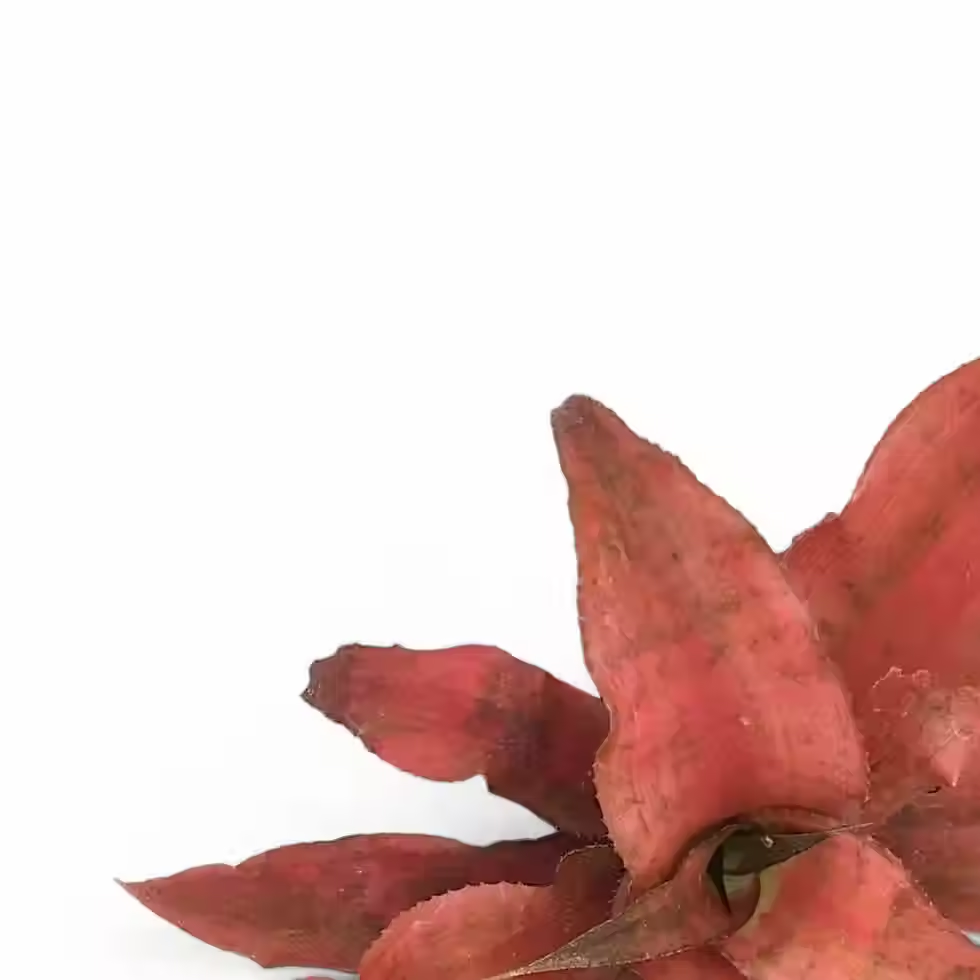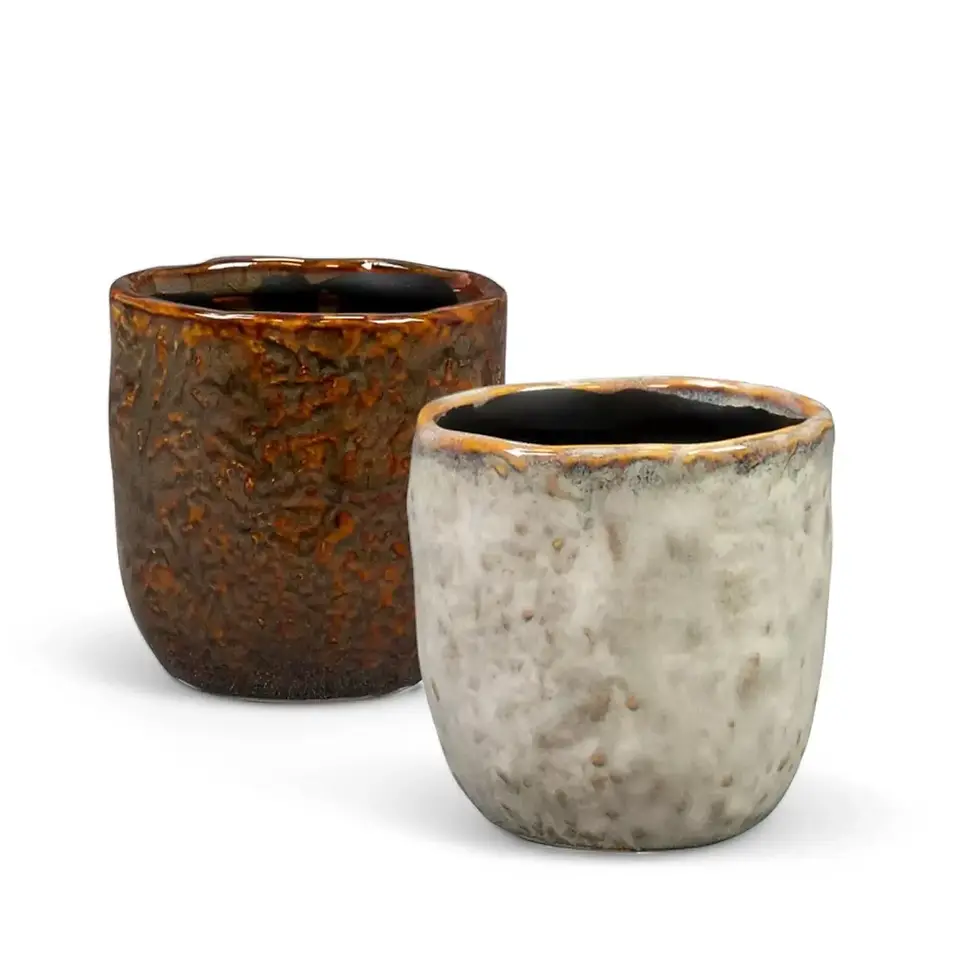Fatsia japonica - Growth, Features, and Care Guide
With its bold, deeply lobed leaves and lush, tropical appeal, Fatsia japonica is a striking houseplant that instantly enhances any indoor space. This evergreen shrub boasts large, glossy, palmate leaves that can grow up to 40 cm wide, creating a dramatic and structured look. The rich green foliage has a leathery texture, slightly wavy edges, and an architectural form, making it a focal point in any plant collection.
Mature plants produce tall, upright stems adorned with spherical clusters of creamy-white flowers in autumn, later forming small black berries. While this spectacle is more common outdoors, indoor Fatsia japonica may still flower under optimal conditions. Its resilience, adaptability to low light, and fast growth rate make it a fantastic low-maintenance option for those looking to add bold greenery to their home.
Why You’ll Love Fatsia japonica
- Statement foliage - Oversized, deeply lobed, glossy leaves create an elegant, tropical look.
- Thrives in low light - Grows well in shadier indoor conditions, unlike many tropical plants.
- Fast-growing and bushy - Quickly develops into a lush, upright shrub.
- Low-maintenance - Adaptable and resilient, making care effortless.
- Non-toxic - Safe for pets and humans, perfect for worry-free indoor placement.
Important Facts About Fatsia japonica
- Native habitat: Japan, South Korea, Taiwan - thrives in warm, humid understories with mild temperatures (10-25°C) and moderate rainfall.
- Growth habit: Bushy, upright shrub with a rounded form reaches 1.5-2 meters indoors.
- Growth rate: Moderate to fast-growing in the right conditions.
- Toxicity:Non-toxic to pets and humans.
- Support needs: Can grow unaided but benefits from occasional pruning to maintain shape.
Caring for Fatsia japonica
Ensure Fatsia japonica thrives with the right care routine:
- 🌞 Light: Prefers bright, indirect light but tolerates low-light conditions. Too much direct sunlight can scorch leaves.
- 💦 Watering: Keep soil evenly moist, allowing the top few centimeters to dry out before watering again. Avoid overwatering to prevent root rot.
- 🌫️ Humidity: Adapts to average indoor humidity, but higher humidity promotes healthier growth. No misting required.
- 🌡️ Temperature: Thrives in 10-25°C, avoiding sudden drops below 5°C. Keep away from drafts and radiators.
- 🪴 Soil: Prefers a well-draining, peat-free potting mix with added perlite or bark for aeration. Avoid compacted soils.
- ↕️ Repotting and Pot Choice: Repot every 2-3 years to refresh soil and accommodate growth. Choose a sturdy, well-draining pot to support its bushy size.
- 🌿 Fertilizing: Feed with a balanced liquid fertilizer every 4 weeks during the growing season. Avoid over-fertilizing.
- ✂️ Pruning: Trim leggy or overgrown stems to encourage a fuller shape and remove any yellowing or damaged leaves.
- 🌱 Propagation: Best propagated through stem cuttings in water or soil. Air layering is also an option for larger plants.
- 🫙 Semi-Hydroponics: Can adapt to inert substrates if provided with consistent moisture and nutrients.
- 📍 Placement: Ideal for shady corners, bright, indirect light areas, or larger spaces needing a statement plant. Avoid direct sun exposure.
Common Issues and Practical Solutions
Even resilient plants like Fatsia japonica can experience occasional issues. Here’s how to address them:
- 🟡 Yellowing leaves? Likely caused by overwatering—let soil dry slightly before watering. Check drainage holes.
- 🌿 Drooping leaves? Usually due to underwatering or sudden temperature drops—adjust watering and keep temperatures stable.
- 🟤 Brown leaf tips? Dry air or inconsistent watering—increase humidity and ensure soil remains evenly moist.
- 📉 Leggy growth? Not enough light—move to brighter indirect light and prune back to encourage bushiness.
- 🐜 Pests? Can attract spider mites, mealybugs, and scale. Regularly wipe leaves and treat infestations with neem oil or insecticidal soap.
- 🦠 Root rot? A result of overwatering—use well-draining soil and allow water to drain completely after each watering.
- 🍃 Fungal issues? If leaves develop black spots or powdery mildew, improve airflow around the plant and avoid overhead watering.
Additional Notes
As Fatsia japonica matures, it develops a woody stem, providing structure for its large leaves. While it doesn’t require support, pruning can help maintain a compact shape. Understanding its natural forest habitat helps mimic ideal conditions—moderate light, high humidity, and stable moisture levels ensure it thrives indoors.
Etymology
The genus name Fatsia originates from the Japanese word “fatsi” (八つ), meaning “eight,” referencing the lobed leaves. The species name japonica highlights its native region, Japan. Initially classified as Aralia japonica by Carl Peter Thunberg, the plant was later reclassified by Joseph Decaisne and Jules Émile Planchon in 1854.
Frequently Asked Questions about Fatsia japonica
→ 1. Does Fatsia japonica need high humidity?
Not necessarily—it adapts well to average indoor humidity but benefits from increased moisture levels in drier environments.
→ 2. How often should I prune my Fatsia japonica?
Prune as needed, usually once or twice a year, to remove leggy stems and promote compact growth.
→ 3. Can Fatsia japonica grow in hydroponics?
Yes, it can adapt to semi-hydroponic systems, as long as nutrient levels and moisture are well-regulated.
Order your Fatsia japonica today and enjoy its bold, easy-care greenery in your home!
Fatsia japonica
Fatsia japonica comes in following sizes:
M – is approximately 35 cm tall and comes in a ⌀ 12 cm pot
L – is approximately 60 cm tall and comes in a ⌀ 15 cm pot

























































